European Travels 5 – Discoveries in Austria
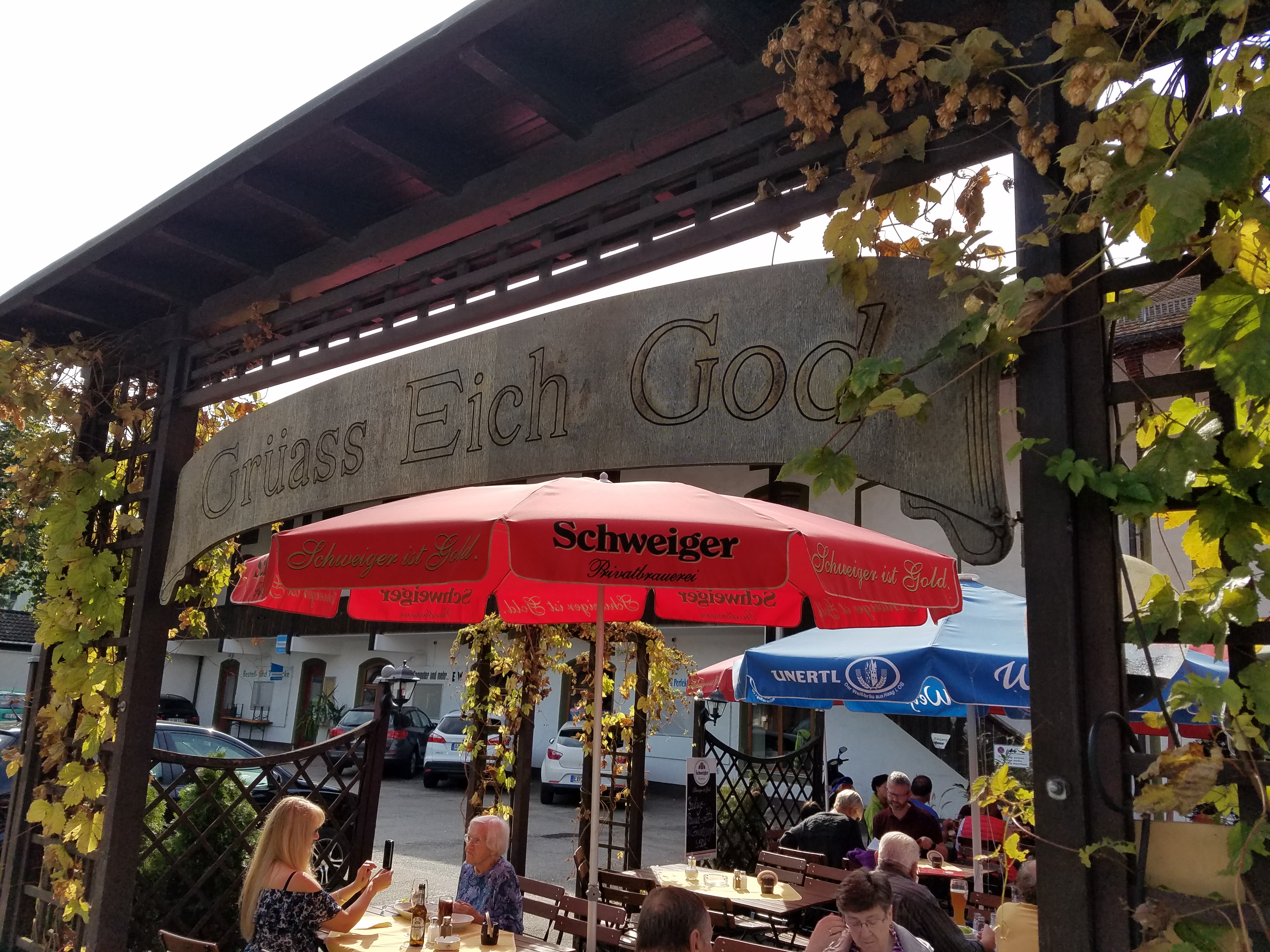 Austria always holds new things for us to discover. After a week in Überlingen, Germany, where we explored sights along Lake Constance, we picked up a rental car in Friedrichshafen and headed to Austria.
Austria always holds new things for us to discover. After a week in Überlingen, Germany, where we explored sights along Lake Constance, we picked up a rental car in Friedrichshafen and headed to Austria.
And we were happy to still have our Webspot Pocket WiFi with us, which we had first used while canal cruising in the Netherlands and during our train trip from Utrecht to Lake Constance. This way we could easily google information about the towns and sights we passed by. (Returning the pocket WIFI was also easy: Later in Vienna, we just dropped it off at a Post office in its metal case and prepaid envelope!)
In Austria
Our car's navigation system led us easily around Munich and, it being a Saturday, we didn't encounter any of the notorious Munich traffic jams.
Soon we found ourselves on Austrian territory. (There are open borders between Germany and Austria, so we had no wait at the border. This is one advantage of the “Schengen Agreement” for tourists and travelers.)
At noon we stopped in a little town. The warm and sunny September weather allowed us to enjoy our lunch in a typical Austrian beer garden. We watched as the restaurant became busy and the tables all got occupied.
We picked up pieces of Austrian conversation here and there, and as is customary in Austria, we were not surprised when another couple joined us at our table.
We enjoyed a delicious meal. As we were leaving, 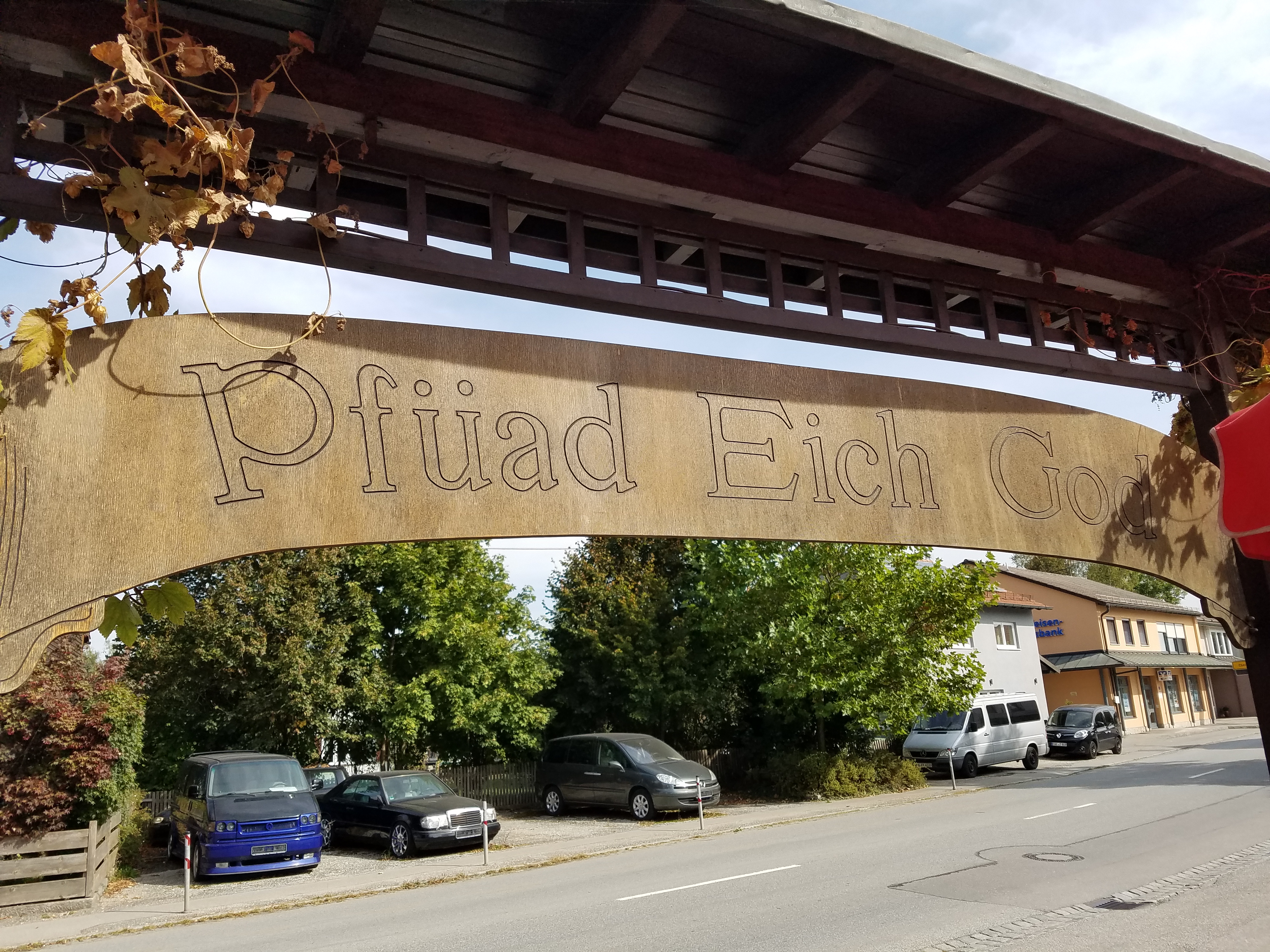 we chuckled when we noticed the sign over the entrance to the garden restaurant: “Grüass Eich God” (see above left) and on the other side of the sign, when leaving: “Pfüad Eich God” (see right).
we chuckled when we noticed the sign over the entrance to the garden restaurant: “Grüass Eich God” (see above left) and on the other side of the sign, when leaving: “Pfüad Eich God” (see right).
The first one is a local form of “Grüß Gott” meaning “May God greet (or bless) you. ” The second translates as something like “Be well with God,” meaning “Goodby.” Both Austrian/Bavarian versions would be pretty well incomprehensible to a German learner. (Now, can you also guess what “Pfüad di” means?)
Wels, Austria
A little more than an hour later, we arrived in Wels where one of Ulrike's Austrian cousins lives with his family. His son now manages the family business, the Hotel and the Gasthof Maxlhaid, located on the outskirts of Wels.
Wels, the seventh-largest city in Austria with 60,000 inhabitants, lies at the Traun River, about 20 miles from Linz. It was my first visit to Wels and I was eager to learn more about its history.
Important during the Roman age, prosperous during the Middle Ages, devastated during the 30 Years' War, Wels became an important manufacturing center during the industrial revolution.
In World War II, Wels saw heavy destruction, and only a few historic buildings have remained. However over the years, new industries have settled there and the city has also gained prominence with its trade fairs and congresses.
The Saturday we arrived happened to be the Lange Nacht der Museen (Long Night of the Museums). For a small fee, people could visit any of the area's participating museums, many of which stayed open until midnight. We took advantage of that opportunity and visited several museums in town, including the City Museum.
Stadtmuseum Burg Wels
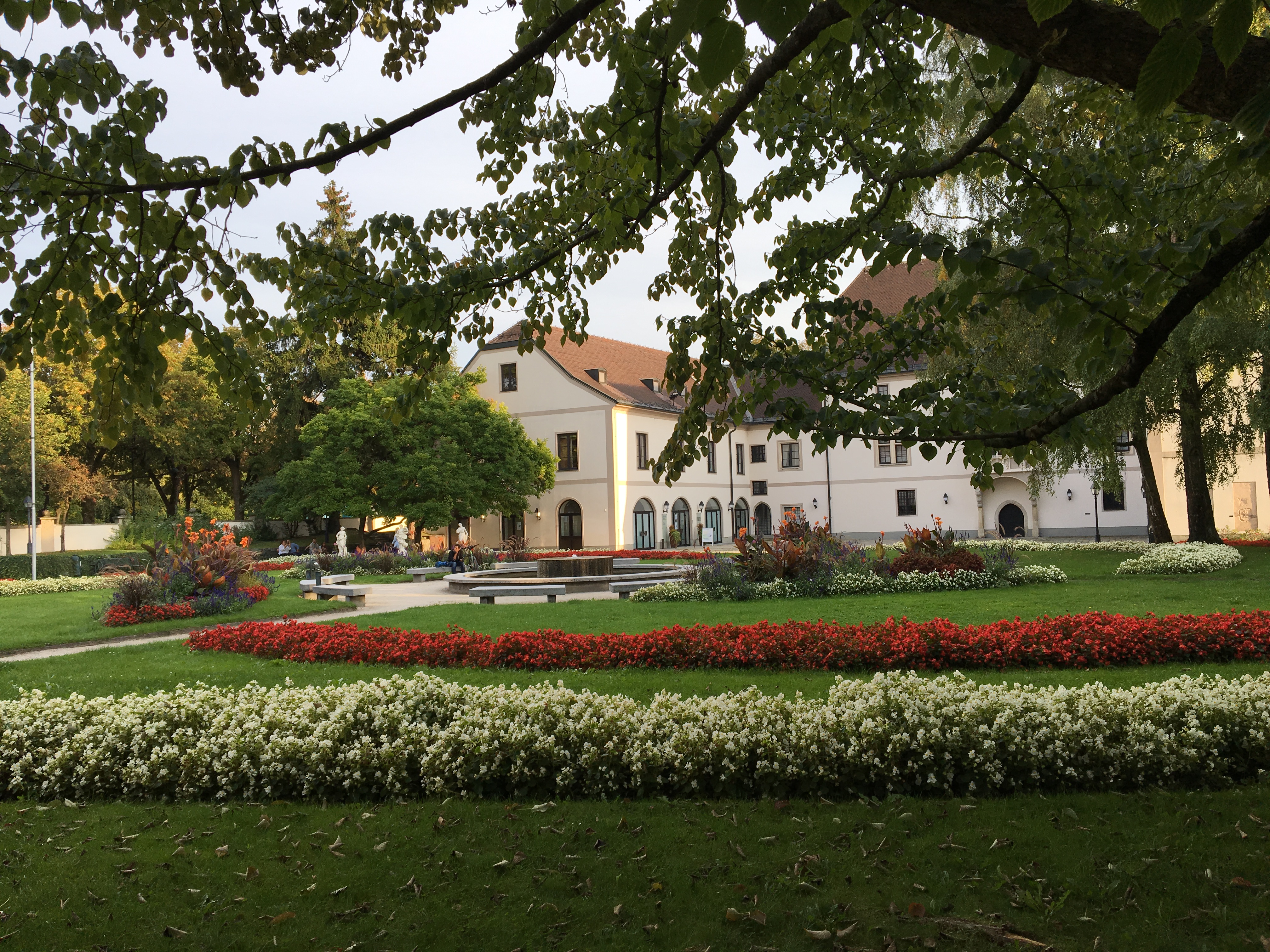 The City Museum is located in a castle, which for centuries belonged to the Habsburg family. (see the castle gardens left) The castle was rebuilt between 1504 and 1514 by emperor Maximilian I in late-Gothic style.
The City Museum is located in a castle, which for centuries belonged to the Habsburg family. (see the castle gardens left) The castle was rebuilt between 1504 and 1514 by emperor Maximilian I in late-Gothic style.
Many artifacts from that time are exhibited, together with documents, models, and audio-visual presentations of the city's and area's history. One exhibit shows the many different bread forms bakers have used over time. Another one shows the various tools and machines the agricultural industry had developed in Austria.
In another display, we were fascinated by several maps that show the German enclaves in what used to be called the “German-Austrian empire” before 1918. Our understanding of the Upper Austrian dialect was also tested (we passed!), when we watched museum staff perform several humorous sketches about Wels personalities.
Pferdeeisenbahnmuseum in der Maxlhaid
At the end of the night, Ulrike's cousin gave us a private tour of his own 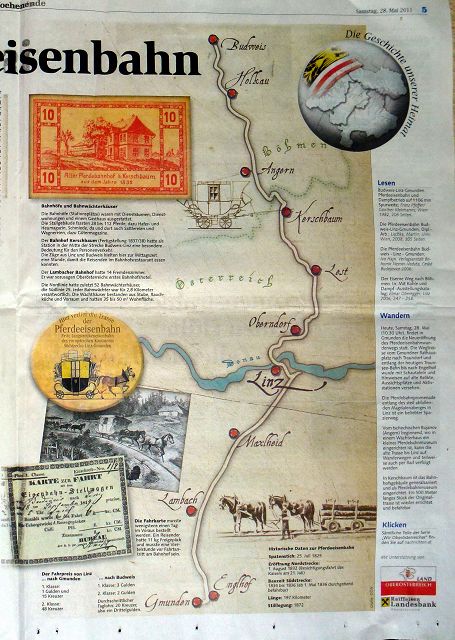 horse railway museum, which is located in a large barn behind the hotel. The museum, a long term hobby, is his love and passion.
horse railway museum, which is located in a large barn behind the hotel. The museum, a long term hobby, is his love and passion.
The history of the horse railway is quite interesting. The Italian Franz Zola, (father of the French writer Émile Zola, 1840-1902) was an engineer/surveyor during the construction of the first continental horse railway between Budweis (now Czech Republic) and Linz (Austria). That was the northern route of the horse railway, which opened in 1832.
Franz Zola received a license from Emperor Franz in 1828 to continue the southern route from Linz to Gmunden. However, when his financing fell through, Zola left for the Foreign Legion and settled later in France.
Subsequently, the southern route of the railway was completed by others in 1836. The 123 miles of track from Gmunden to Budweis could then meet their real purpose: transporting goods, especially salt from Gmunden to Bohemia.
The station Maxlhaid, at the location of the current hotel, was one of several stations where horse changes occurred and a tavern already existed there in 1835. By 1855, however, steam engines replaced the horses and the horse railway became history. (See the map above and the German Wikipedia entry for further details of the Budweis-Gmunden horse railway).
Linz, Austria
The next day, we visited Linz, the capital of Upper Austria. It is Austria's third-largest city with a population of over 200,000. Linz is only 19 miles from the Czech border. Founded by the Romans and called “Lentia,” Linz was the most important city in the Habsburg Empire, but lost its status to Vienna and Prague after the death of Emperor Frederick III in 1493.
Today Linz remains one of Austria's main economic centers. Its harbor on the Danube (one of four in Austria) attracts logistic and trading enterprises as well as manufacturing plants along the river banks. From the Pöstlingberg, a 1700-foot hill on the left bank of the Danube, we had a wonderful view of the city.
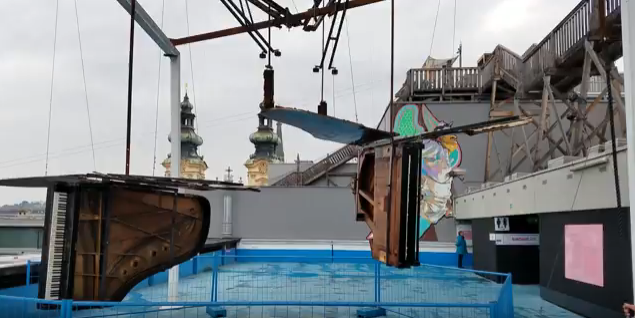 We were intrigued by “Höhenrausch 2016,” an exhibition now in its ninth year, with always changing art. This year angels were the main topic. The “Höhenrausch” tour takes you through large rooms of the Ursuline Church, the top of a parking garage and terraces with various sculptures. It was all both fun and instructive. We learned about the history of angels in different religions, and in literature and art.
We were intrigued by “Höhenrausch 2016,” an exhibition now in its ninth year, with always changing art. This year angels were the main topic. The “Höhenrausch” tour takes you through large rooms of the Ursuline Church, the top of a parking garage and terraces with various sculptures. It was all both fun and instructive. We learned about the history of angels in different religions, and in literature and art.
We were amused by various interactive exhibits (click on the picture above or this YouTube clip to see a piano with wings). The views across the roofs of Linz from one of the wooden towers were spectacular.
Our short stay did not allow us to visit any of the many museums along the banks of the Danube, for example, the Schlossmuseum, the Lentos Art Museum, the Ars Electronica Center, but we got a glimpse of them during our walk through the city and along the Danube.
The Danube
Seeing the Danube wind its way through Linz prompted me to look a little further into this great European river. 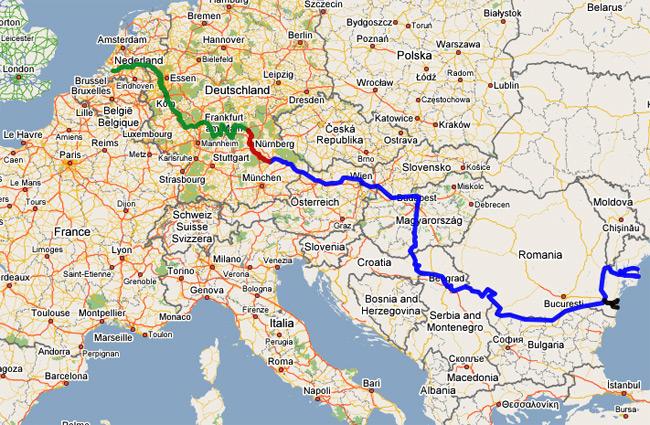 Indeed, with a length of about 1785 miles, the Danube is the second longest European river after the Volga.
Indeed, with a length of about 1785 miles, the Danube is the second longest European river after the Volga.
And, as no other river in the world, it touches 10 different countries on its way: From its source in the Black Forest in Germany, it flows through Austria, Slovakia, Hungary, Serbia, Romania, Croatia, Bulgaria, Moldavia, and Ukraine, where it empties into the Black Sea.
With the completion of the Main-Danube Canal (Main-Donau Kanal) in 1992, linking the Rhine with the Danube, a waterway connection between the North Sea and the Black Sea was established. Thereby even more European states were linked through their own connected waterways. (On the map above, the Rhine and Main are shown in green, The Main-Danube Canal in red, and the navigable stretch of the Danube in blue.)
We would be amiss if we didn't mention the poster child of German compound words: Donaudampfschifffahrtskapitän (Captain of the Danube Steamship Company)
(However, it even pales against this one which contains 79 letters and, reportedly, holds the 1996 Guinness Book of World Records. Click HERE for the translation and history.) Donaudampfschiffahrtselektrizitätenhauptbetriebswerkbauunterbeamtengesellschaft
Vienna, Austria
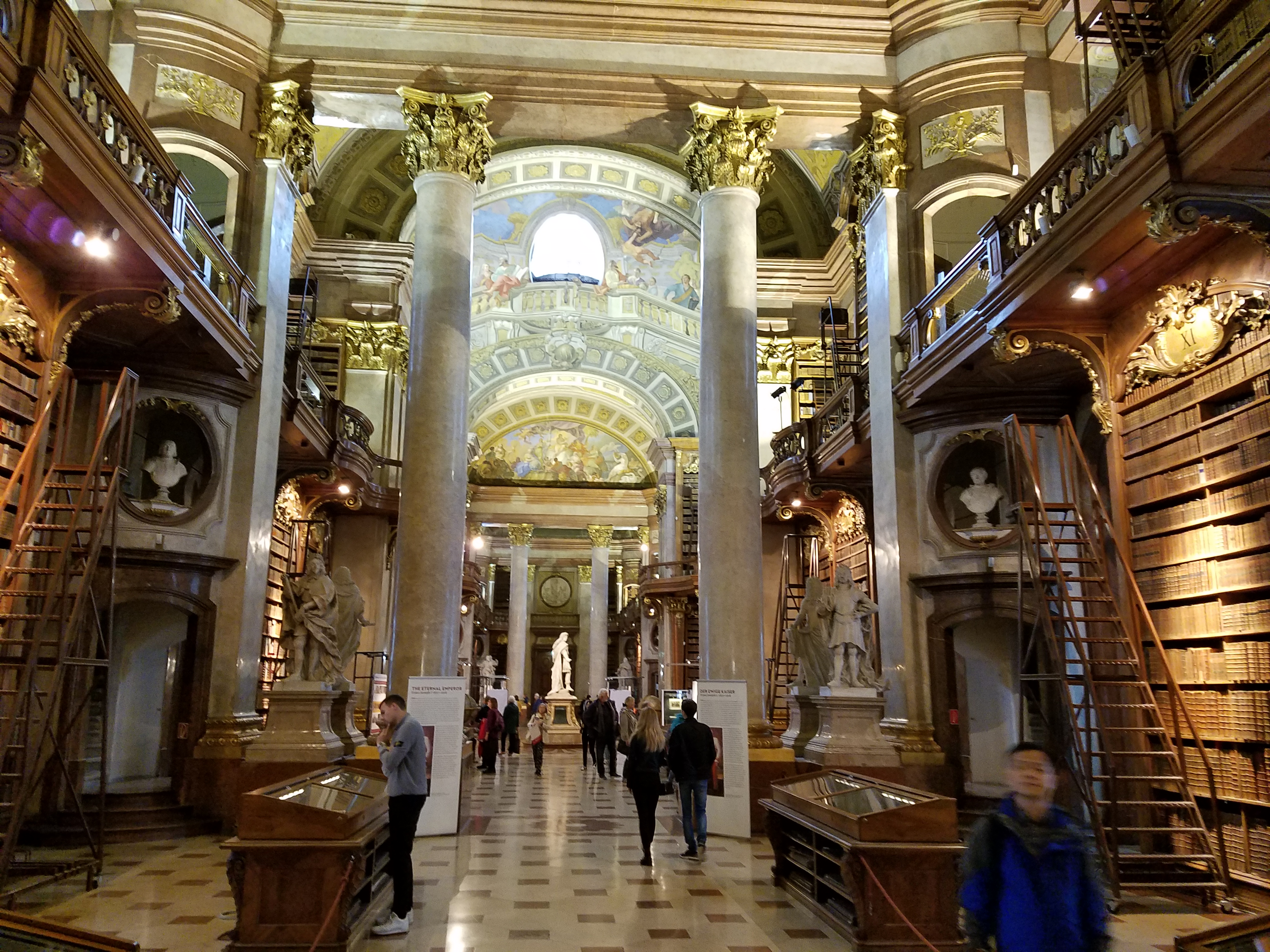 A few days later found us walking through the streets of Vienna, a city we both know well. But you can always find something new to do in Vienna!
A few days later found us walking through the streets of Vienna, a city we both know well. But you can always find something new to do in Vienna!
This time we happened to walk by the Austrian National Library and were attracted by the exhibition about the life of Emperor Franz Joseph I. It was held in remembrance of the 100th anniversary of his death in 1916. Franz Joseph's long life (1830-1910) made him the “ewige Kaiser” (eternal emperor) to many Austrians.
He reportedly was the most painted and photographed person of the 19th century. The exhibition described his life from young child to teenager, young man, media star, and statesman, with portraits, letters, news reports. It was was set up in the Library's grand “Prunksaal” (State Hall).
The Austrian National Library is not only the largest library in Austria with 7.4 million books, but the “Prunksaal” of the old imperial library takes your breath away. It forms part of the Hofburg Palace and everywhere you look, there are sculptures, frescoes, marble statues, and paintings.
So next time you go to Austria, consider going a little of the beaten track. And don't forget, when you come to Vienna, take a look at the Austrian National Library.
Bio: Peter Rettig is the co-founder of Gamesforlanguage.com. He is a lifelong language learner, growing up in Austria, Germany, and Switzerland. You can follow him on Facebook, Twitter and Instagram, and leave any comments with contact or below.
